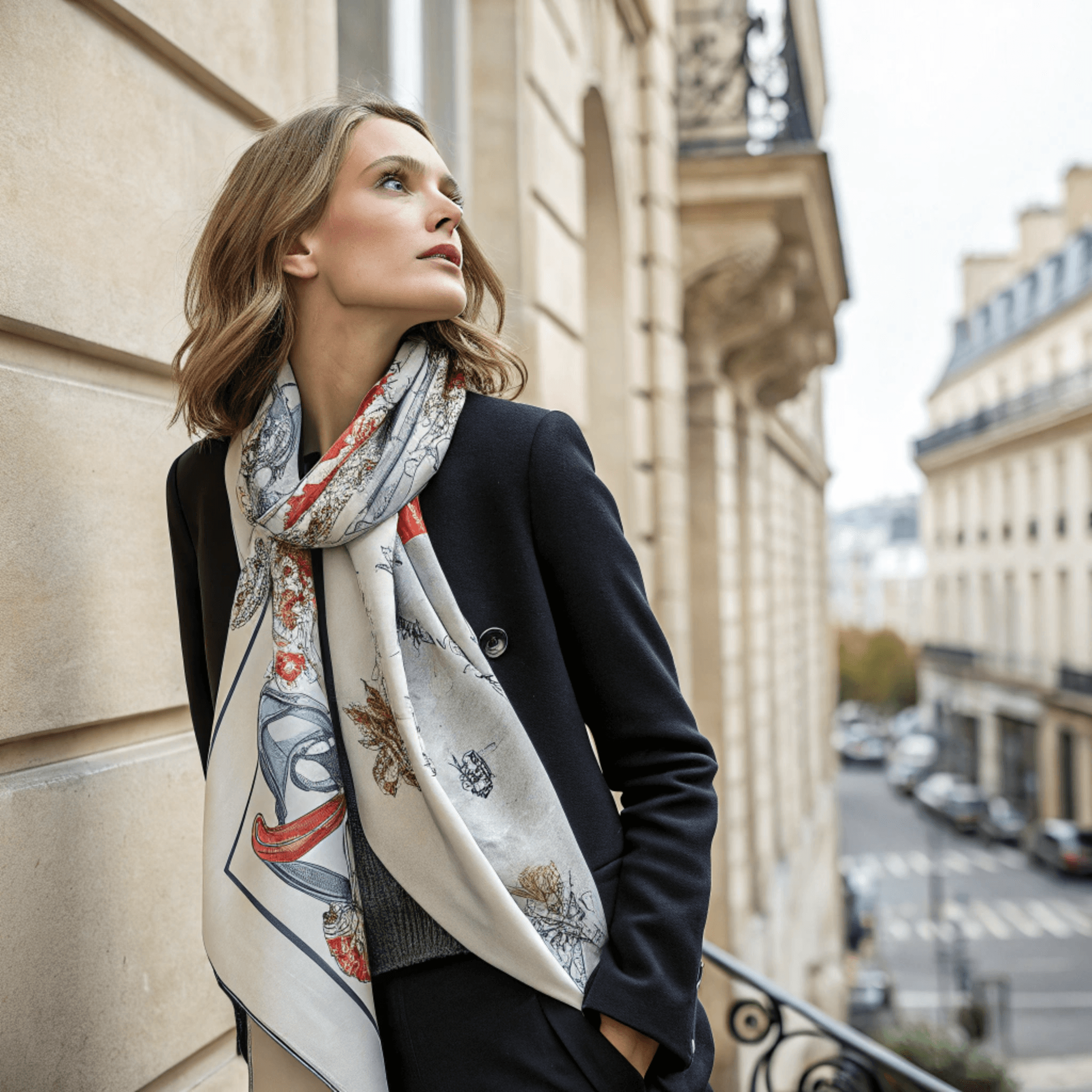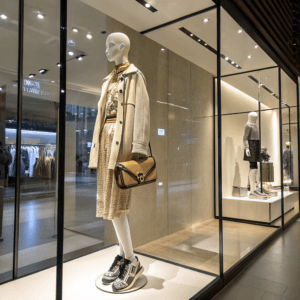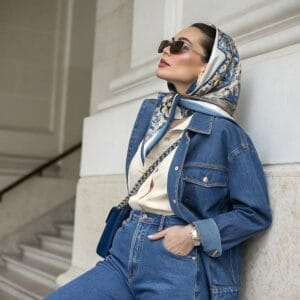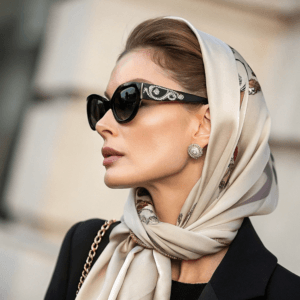Global Fashion Trends
As we transition into fall/winter 2024, the fashion landscape showcases vibrant and evolving trends that captivate and inspire. Color palettes this season lean towards rich jewel tones, earthy neutrals, and unexpected pastel combinations, effectively reflecting an innovative spirit that resonates globally. French and Italian fashion houses, renowned for their luxury, have particularly embraced these colors, creating collections that combine elegance with a contemporary twist.
Among the notable trends this season are luxurious scarves, integral to winter wardrobes. These accessories are being showcased in innovative ways, with the Montregard brand leading in terms of craftsmanship and design. Their handmade scarves emphasize quality and attention to detail, making them a precious addition for fashion enthusiasts. The integration of accessible luxury within such prestigious brands resonates with a broader audience seeking refined style without compromising on sustainability.
Furthermore, patterns and fabrics play a critical role in defining the aesthetic of the season. Textures such as velvets and wools are favored, often adorned with intricate motifs or bold prints. The incorporation of innovative sustainable materials demonstrates a commitment to ethical production, mirroring the heightened awareness among consumers regarding environmental impacts. Fashion brands are increasingly exploring alternatives, prioritizing not just style but also their ecological footprint, thus influencing purchasing behaviors across markets.
Silhouettes this season highlight the signature French chic, with tailored pieces juxtaposed against relaxed designs, providing versatile options for various occasions. The emphasis on how garments fit into everyday life reflects an overall shift towards practicality in luxury fashion. Furthermore, many labels are opting for more bespoke creations, underscoring their dedication to craftsmanship and individual expression, which fosters a deeper connection with their clientele.
Ultimately, the fall/winter 2024 collections illustrate the dynamic interplay between tradition and innovation, positioning the global fashion industry to meet the evolving desires of consumers while laying a foundation for more ethical practices moving forward.
Market Analysis
In 2024, the fashion industry has been marked by substantial shifts in consumer behavior, particularly influenced by the rise of digital shopping, which has reshaped the way individuals engage with brands. The convenience of e-commerce has not only increased sales but has also led to significant changes in how consumers perceive and purchase fashion items. This evolution is particularly evident in Europe, with brands such as Montregard, known for its luxury handmade scarves, garnering a dedicated online following.
Moreover, the trend towards personalization has become increasingly prominent within the market. Consumers are now seeking tailored experiences that cater to their unique tastes. Brands are leveraging data analytics to enhance customer engagement by offering personalized recommendations, thereby creating a bespoke shopping experience. This shift is transforming how fashion brands interact with their clientele, fostering loyalty in a competitive landscape.
Furthermore, the popularity of second-hand fashion has accelerated, driven by sustainability concerns and a growing appreciation for vintage styles. Consumers are now gravitating towards pre-owned clothing, with platforms that facilitate this exchange becoming an integral part of the fashion ecosystem. This trend presents both opportunities and challenges for fashion brands, as they must adapt their strategies to engage with a more eco-conscious audience. The Montregard brand, for instance, may explore innovative ways to incorporate sustainable practices while maintaining the luxury status associated with its products.
An analysis of growth rates across different fashion segments reveals a stark contrast between luxury and affordable options. While there is a steady demand for high-end products, brands producing affordable fashion are witnessing a surge in popularity, particularly in Asia and North America. As consumer preferences evolve, the resilience of the fashion market relies on brands being agile and responsive to these changing dynamics.
In conclusion, the global fashion industry in 2024 presents numerous opportunities alongside distinct challenges. Brands must navigate shifting consumer preferences and find strategies to thrive in an increasingly digital and sustainability-focused marketplace.
Technological Advancements in the Fashion Industry
The fashion industry is currently experiencing a transformative shift driven by technological advancements. Emerging technologies such as artificial intelligence (AI), virtual reality (VR), and blockchain are redefining how brands operate, connect with consumers, and manage supply chains. In particular, the integration of AI offers opportunities for personalized shopping experiences, enabling brands to forecast trends based on consumer data and behavior analysis, creating a more customized experience for users. This is especially significant as the demand for luxury products, such as those offered by the Montregard brand that specializes in scarves, continues to rise.
Furthermore, virtual reality has begun to revolutionize how customers engage with fashion. Through immersive experiences, consumers can now explore innovative collections from brands across the globe, including those from France and Turkey. This technology enhances the way luxury items are showcased, allowing brands to create virtual showrooms that visually captivate shoppers and facilitate greater emotional connections to the products. As fashion retailers increasingly adopt VR technologies, they can foster brand loyalty and improved customer experiences.
In addition to AI and VR, blockchain technology is revolutionizing transparency and traceability within the sector. This is particularly crucial for luxury brands, which can utilize blockchain to authenticate products, ensuring that customers receive genuine, handmade items. The Montregard brand exemplifies this trend, assuring its clientele of the authenticity and ethical production of its precious scarves. Moreover, the rise of digital fashion and non-fungible tokens (NFTs) presents new opportunities for designers to create and sell virtual garments, allowing brands to diversify their offerings and engage new market segments.
Overall, the strategic implementation of these technological innovations is reshaping the landscape of the fashion industry. As the integrations of automation and data analytics enhance production processes, fashion brands are better positioned to meet the dynamic needs of consumers, reinforcing their competitiveness in the market.
Competitive Analysis and Strategic Recommendations
The fashion industry in 2024 has seen a transformative shift, as brands increasingly adopt innovative marketing strategies to differentiate themselves in a rapidly evolving marketplace. Notably, brands such as Montregard are setting benchmarks by leveraging unique positioning techniques that focus on quality and luxury. As French fashion continues to thrive, the emphasis on handmade products, such as exquisite scarves, has become a trend that resonates strongly with consumers seeking authenticity in their purchases.
Competitors in the fashion sector have recognized that consumer preferences are rapidly changing, particularly a move towards sustainable practices and ethical manufacturing. This has motivated brands to align their product offerings with contemporary values. For example, Turkish brands are integrating artisanal craftsmanship with modern aesthetics, appealing to consumers with a taste for luxury while supporting handmade production. Innovative campaigns emphasizing sustainability have gained traction, allowing these brands to foster a deeper emotional connection with their audience.
To establish a strong market position, the Montregard brand should consider strategic recommendations such as employing technology-driven marketing campaigns that highlight the story behind each piece of clothing or accessory. By leveraging social media platforms effectively, the brand could introduce their luxurious scarves and accessories to a broader audience. Additionally, cultivating brand loyalty through personalized experiences can enhance consumer retention and advocacy.
Furthermore, it is essential for Montregard to focus on sustainability not merely as a trend but as a core brand value. By promoting the eco-friendly aspects of their products and production processes, the brand can capture the growing segment of consumers who prioritize ethical fashion choices. Overall, a balanced approach that combines luxury, innovation, and sustainability is crucial for navigating the competitive landscape of 2024 and beyond.







